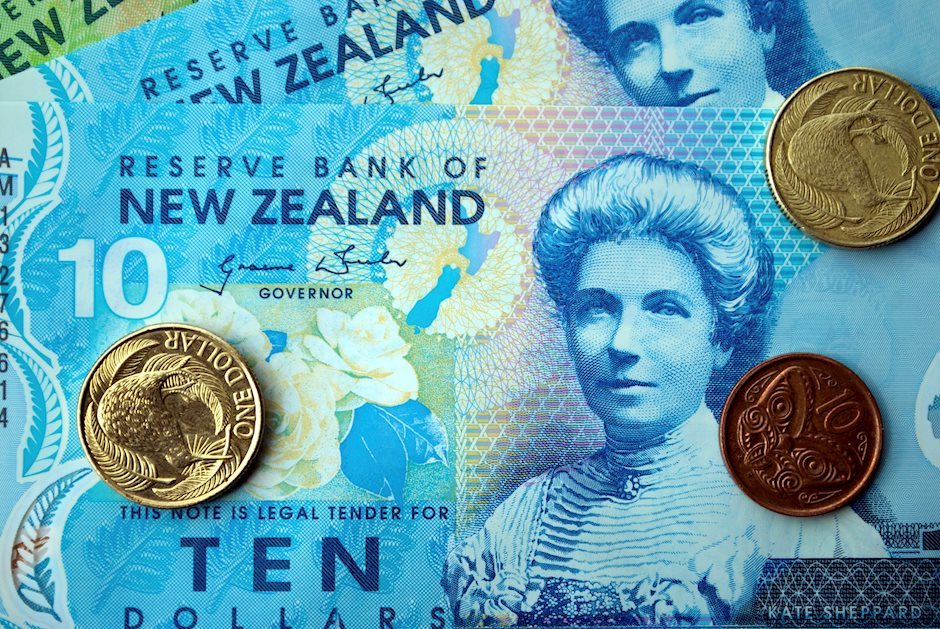NZD/USD weakens below 0.6200, eyes on US Services PMI data
- NZD/USD trades softer near 0.6195 in Thursday’s early Asian session.
- The US Job Openings were weaker than expected in July.
- China's growth pessimism weighs on the Kiwi.

The NZD/USD pair loses traction around 0.6195 during the early Asian session on Thursday. The concerns about the Chinese economic slowdown weigh on the China-proxy New Zealand Dollar (NZD). Traders will keep an eye on the release of the US ISM Services Purchasing Managers Index (PMI), which is due later on Thursday.
The US Job openings fell more than expected in July, adding a sign of the labor market softening. The Job Openings and Labor Turnover Survey showed that available positions fell to 7.67 million in July from 7.91 million openings in June, the lowest level since January 2021.
Traders will closely watch the US labor market data on Friday, including the US Nonfarm Payrolls (NFP) and the Unemployment Rate. The US economy is expected to see 160,000 job additions in August, while the unemployment rate is projected to tick lower to 4.2%. Deutsche Bank economists suggested that a weaker NFP reading or a rise in the Unemployment Rate could reinforce market expectations for a 50 bps rate cut by the Federal Reserve (Fed), which might further undermine the Greenback.
On the Kiwi front, Bank of America Global Research analysts cut China’s GDP forecasts from 5.0% to 4.8%, raising concern about the economic slowdown. Additionally, the Chinese Caixin Services PMI was weaker than expected in August, dropping to 51.6 from 52.1 in July. The negative outlook surrounding the Chinese economy might cap the pair’s upside as China is a major trading partner to New Zealand.
(This story was corrected on September 5 at 09:15 GMT to say that economists expect the US employers to have added 160,000 jobs in August, not 161,000.)
New Zealand Dollar FAQs
The New Zealand Dollar (NZD), also known as the Kiwi, is a well-known traded currency among investors. Its value is broadly determined by the health of the New Zealand economy and the country’s central bank policy. Still, there are some unique particularities that also can make NZD move. The performance of the Chinese economy tends to move the Kiwi because China is New Zealand’s biggest trading partner. Bad news for the Chinese economy likely means less New Zealand exports to the country, hitting the economy and thus its currency. Another factor moving NZD is dairy prices as the dairy industry is New Zealand’s main export. High dairy prices boost export income, contributing positively to the economy and thus to the NZD.
The Reserve Bank of New Zealand (RBNZ) aims to achieve and maintain an inflation rate between 1% and 3% over the medium term, with a focus to keep it near the 2% mid-point. To this end, the bank sets an appropriate level of interest rates. When inflation is too high, the RBNZ will increase interest rates to cool the economy, but the move will also make bond yields higher, increasing investors’ appeal to invest in the country and thus boosting NZD. On the contrary, lower interest rates tend to weaken NZD. The so-called rate differential, or how rates in New Zealand are or are expected to be compared to the ones set by the US Federal Reserve, can also play a key role in moving the NZD/USD pair.
Macroeconomic data releases in New Zealand are key to assess the state of the economy and can impact the New Zealand Dollar’s (NZD) valuation. A strong economy, based on high economic growth, low unemployment and high confidence is good for NZD. High economic growth attracts foreign investment and may encourage the Reserve Bank of New Zealand to increase interest rates, if this economic strength comes together with elevated inflation. Conversely, if economic data is weak, NZD is likely to depreciate.
The New Zealand Dollar (NZD) tends to strengthen during risk-on periods, or when investors perceive that broader market risks are low and are optimistic about growth. This tends to lead to a more favorable outlook for commodities and so-called ‘commodity currencies’ such as the Kiwi. Conversely, NZD tends to weaken at times of market turbulence or economic uncertainty as investors tend to sell higher-risk assets and flee to the more-stable safe havens.
Author

Lallalit Srijandorn
FXStreet
Lallalit Srijandorn is a Parisian at heart. She has lived in France since 2019 and now becomes a digital entrepreneur based in Paris and Bangkok.

















